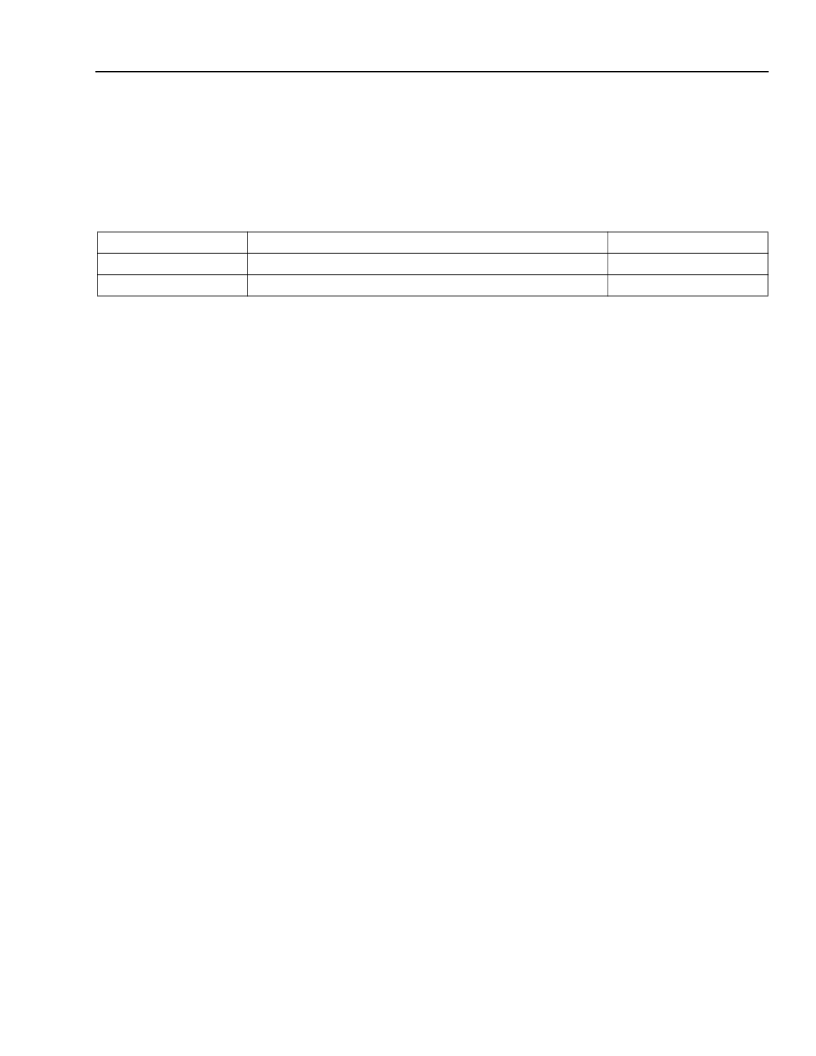- 您現(xiàn)在的位置:買賣IC網(wǎng) > PDF目錄371179 > T8301 T8301 Internet Protocol Telephone Phone-On-A-Chip⑩ IP Solution DSP PDF資料下載
參數(shù)資料
| 型號: | T8301 |
| 英文描述: | T8301 Internet Protocol Telephone Phone-On-A-Chip⑩ IP Solution DSP |
| 中文描述: | T8301因特網(wǎng)協(xié)議電話熱線電話在一個芯片⑩DSP的IP解決方案 |
| 文件頁數(shù): | 11/190頁 |
| 文件大?。?/td> | 1535K |
| 代理商: | T8301 |
第1頁第2頁第3頁第4頁第5頁第6頁第7頁第8頁第9頁第10頁當前第11頁第12頁第13頁第14頁第15頁第16頁第17頁第18頁第19頁第20頁第21頁第22頁第23頁第24頁第25頁第26頁第27頁第28頁第29頁第30頁第31頁第32頁第33頁第34頁第35頁第36頁第37頁第38頁第39頁第40頁第41頁第42頁第43頁第44頁第45頁第46頁第47頁第48頁第49頁第50頁第51頁第52頁第53頁第54頁第55頁第56頁第57頁第58頁第59頁第60頁第61頁第62頁第63頁第64頁第65頁第66頁第67頁第68頁第69頁第70頁第71頁第72頁第73頁第74頁第75頁第76頁第77頁第78頁第79頁第80頁第81頁第82頁第83頁第84頁第85頁第86頁第87頁第88頁第89頁第90頁第91頁第92頁第93頁第94頁第95頁第96頁第97頁第98頁第99頁第100頁第101頁第102頁第103頁第104頁第105頁第106頁第107頁第108頁第109頁第110頁第111頁第112頁第113頁第114頁第115頁第116頁第117頁第118頁第119頁第120頁第121頁第122頁第123頁第124頁第125頁第126頁第127頁第128頁第129頁第130頁第131頁第132頁第133頁第134頁第135頁第136頁第137頁第138頁第139頁第140頁第141頁第142頁第143頁第144頁第145頁第146頁第147頁第148頁第149頁第150頁第151頁第152頁第153頁第154頁第155頁第156頁第157頁第158頁第159頁第160頁第161頁第162頁第163頁第164頁第165頁第166頁第167頁第168頁第169頁第170頁第171頁第172頁第173頁第174頁第175頁第176頁第177頁第178頁第179頁第180頁第181頁第182頁第183頁第184頁第185頁第186頁第187頁第188頁第189頁第190頁

Lucent Technologies Inc.
11
Advance Data Sheet
December 2000
Phone-On-A-Chip
IP Solution DSP
T8301 Internet Protocol Telephone
4 DSP1600 Core
(continued)
INT0N is dedicated to the
ARM
DCC interrupts in the DSP’s mask ROM. INT1N is internally ORed with the DMA
interrupt. The DSP’s mask ROM for INT1 is dedicated to DMA servicing. It is recommended that INT1N float (inter-
nal pull up on pin).
4.7 Power Management
There are three different power management control mechanisms: the
power control register
(
POWERC
), the
stop pin (
STOPN
), and the
AWAIT
bit in the
ALF
register
. Refer to the DSP1627 data sheet for more information
concerning these registers and their usage.
4.8 External Memory Interface (EMI)
The T8301 external memory interface is used to access the non-DSP1627 core features provided in the T8301
integrated circuit. The external memory interface is also used to access off-chip resources such as the interproces-
sor communication memories contained in the IPT_ARM integrated circuit.
The T8301 external memory interface requires one wait-state to access on-chip resources and two wait-states to
access 15 ns or faster off-chip resources when operating at 80 MHz.
4.9 T8301 Memory Mapping
The T8301 contains various types of memory modules, all with varying characteristics, aside from their memory
map location. As a Harvard architecture, the device has two address/data buses; these are referred to as X and Y.
The X system is used for program instructions and data, and the Y system is typically for data and memory
mapped I/O. Memory is 16 bits wide.
The DSP1627 can vary the X bus memory map based on the logic levels on two signals:
EXM
and
LOWPR
. How-
ever, the T8301 has
EXM
tied low internally, reducing the possibilities to two. The two memory maps are the
DSP1627’s MAP1 and MAP3.
LOWPR
is software controllable. When using the DSP1627 software tools (with JCS
i.e., JTAG communications system) the tools will configure
LOWPR
automatically based upon the link time compile
options of the
.if
file. Map1 is the default map. The basic difference of the two maps is the type of memory at the
reset vector (0x0000). MAP1 has ROM at 0x0000, and MAP3 has RAM at 0x0000. The Y map is fixed.
The T8301 is a masked ROM-coded device and contains no flash memory. MAP 1 is typically used for production,
and Map 3 is typically used for code development. When used in conjunction to the T8302
ARM
embedded proces-
sor, the
ARM
will be required to pass all code and data to the DSP's ram at power up reset. A hardware/software
protocol must be instituted to allow the ARM to successfully load code into the DSP
Note:
All X memory references are MAP 3.
I
Internal ROM, IROM—32K x 16:
— Responds only to the X data bus, the X memory location is 0x4000—0xBFFF. This block will operate with zero
wait-states.
Table 3. DSP1627 INT0N and INT1N
Interrupt
INT1N
INT0N
Function
Interrupt Priority
4 (higher)
2
Interrupt from DMA block or external interrupt 1, active-low.
External interrupt input 0, active-low.
相關(guān)PDF資料 |
PDF描述 |
|---|---|
| T8302 | T8302 Internet Protocol Telephone Advanced RISC Machine (ARM) Ethernet QoS Using IEEE 802.1q |
| T8502 | T8502 and T8503 Dual PCM Codecs with Filters |
| T8503 | T8502 and T8503 Dual PCM Codecs with Filters |
| T8531A | T8531A/8532 Multichannel Programmable Codec Chip Set |
| T8531 | T8502 and T8503 Dual PCM Codecs with Filters |
相關(guān)代理商/技術(shù)參數(shù) |
參數(shù)描述 |
|---|---|
| T8301AX | 制造商:MOLEX 制造商全稱:Molex Electronics Ltd. 功能描述:Terminator Die |
| T8301BX | 制造商:MOLEX 制造商全稱:Molex Electronics Ltd. 功能描述:Terminator Die |
| T8301DX | 制造商:MOLEX 制造商全稱:Molex Electronics Ltd. 功能描述:Terminator Die |
| T8302 | 制造商:AGERE 制造商全稱:AGERE 功能描述:T8302 Internet Protocol Telephone Advanced RISC Machine (ARM) Ethernet QoS Using IEEE 802.1q |
| T8302A | 制造商:MOLEX 制造商全稱:Molex Electronics Ltd. 功能描述:Terminator Die |
發(fā)布緊急采購,3分鐘左右您將得到回復(fù)。